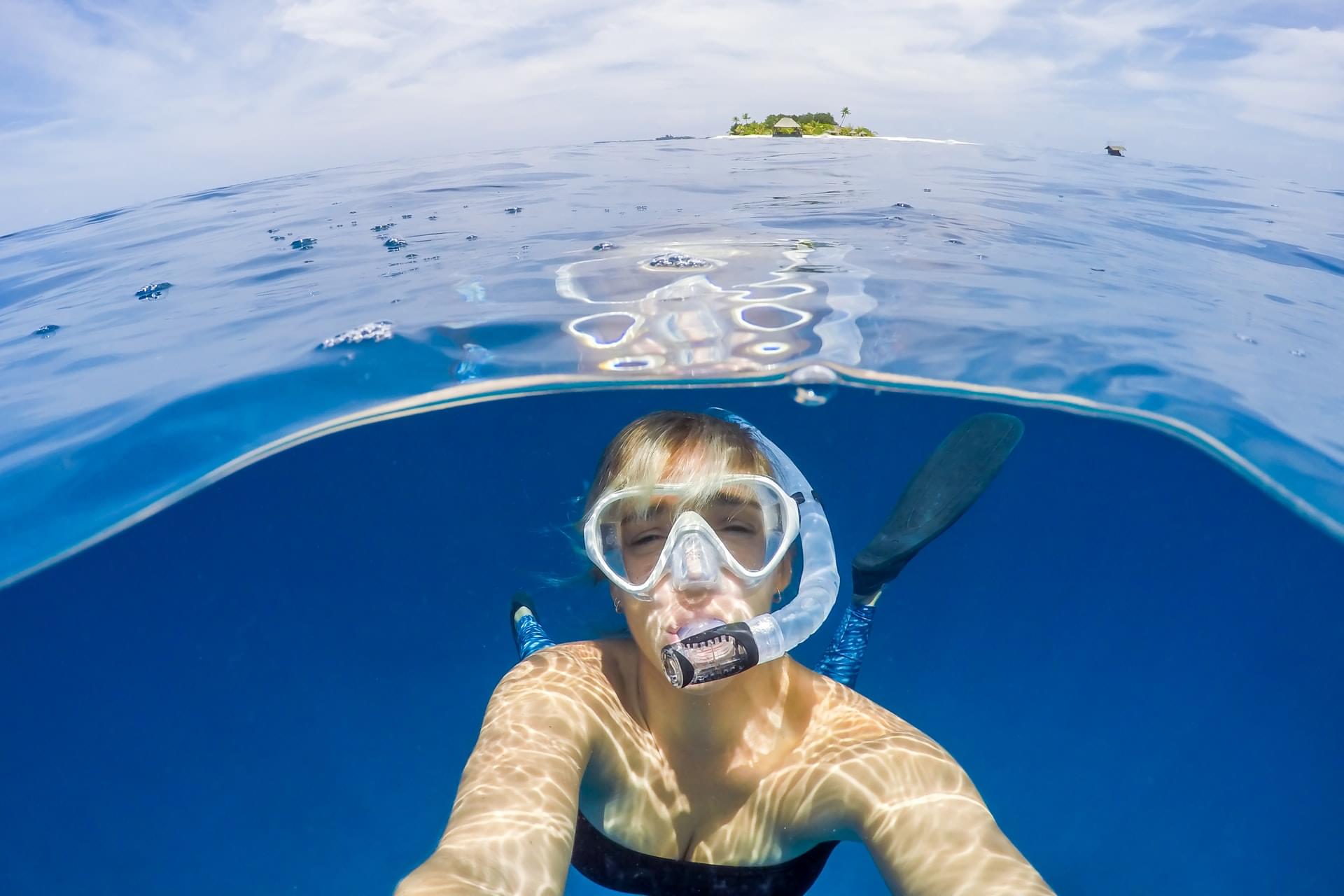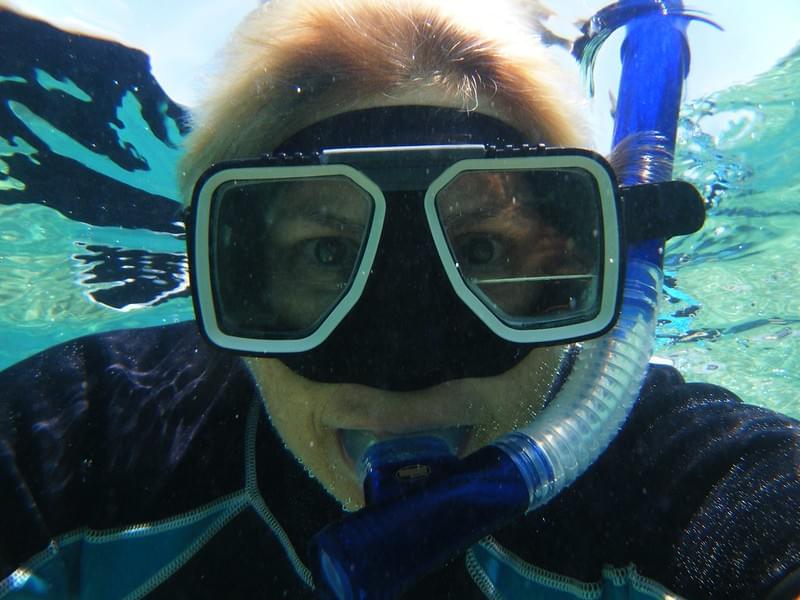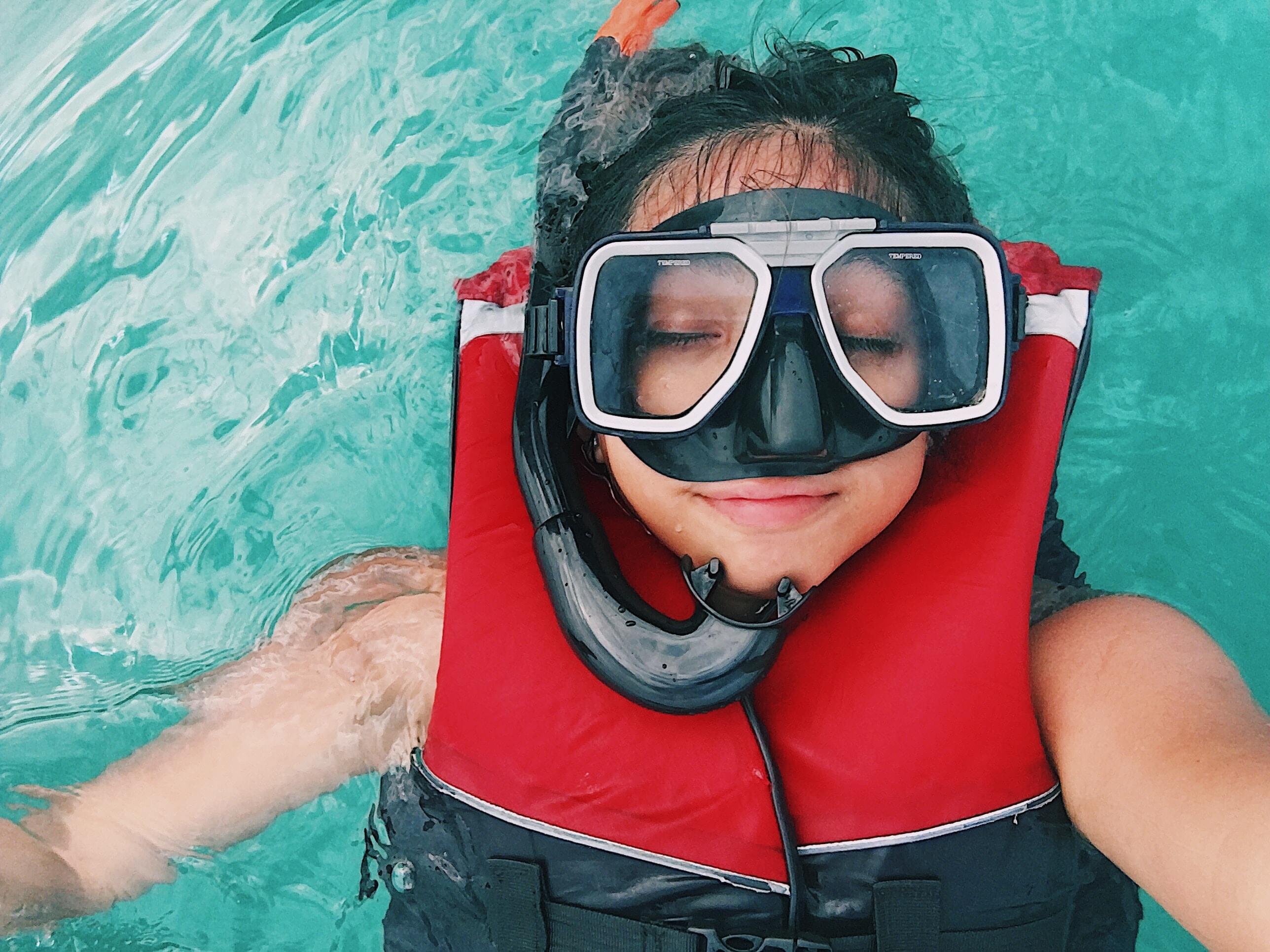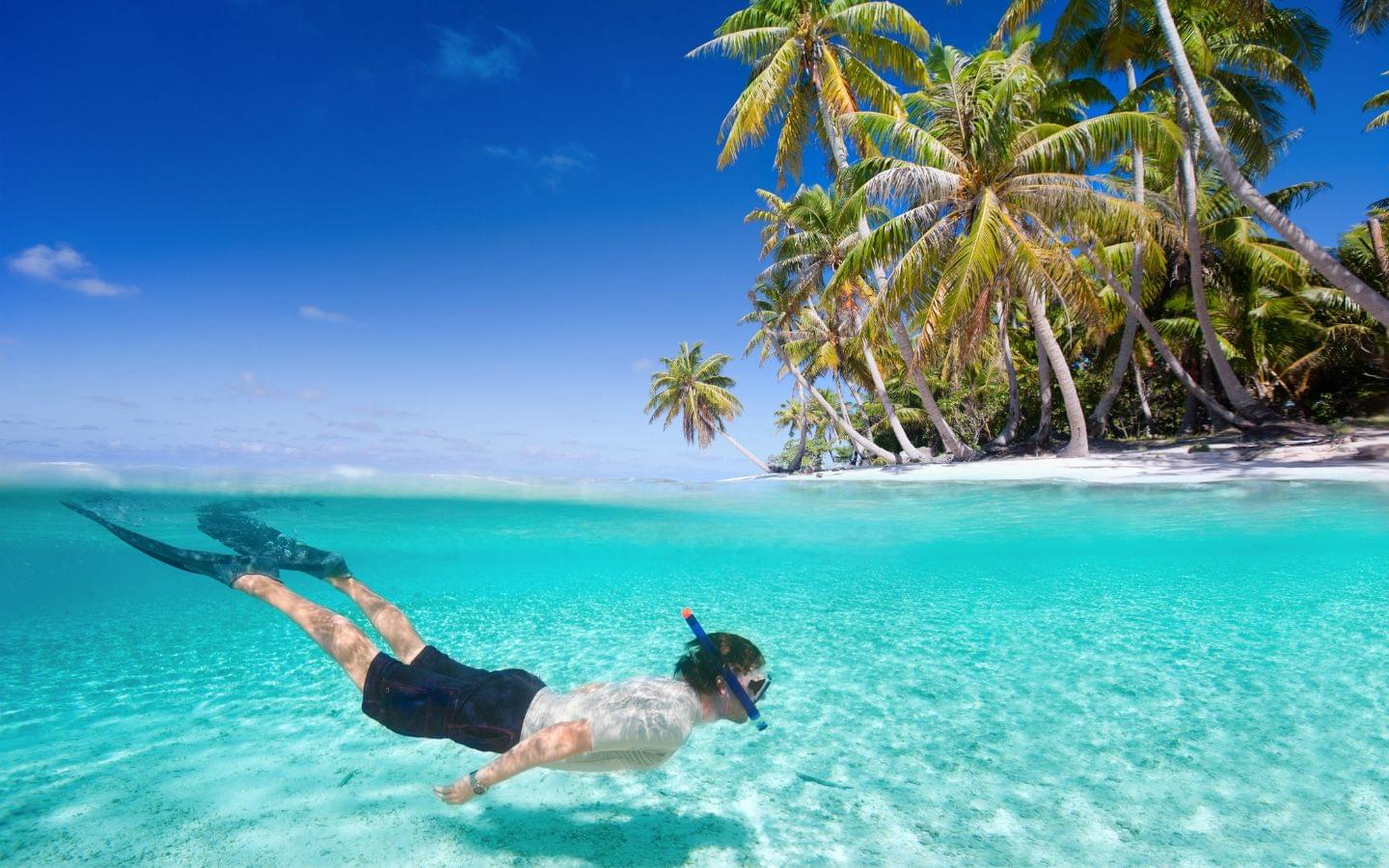How to snorkel with glasses
Planning a tropical vacation complete with snorkeling excursions is a lot of fun, but it can get more complicated for those with vision problems. If you find yourself asking how to snorkel with glasses, you’re not alone. The Vision Council of America estimates that roughly 75 percent of adults need some form of vision correction, and 64 percent wear eyeglasses1. With so many people relying on glasses, the question of how to enjoy snorkeling without blurry vision is a common one.
Fortunately, there are several practical solutions that let snorkelers with vision issues see clearly underwater—without risking leaks or discomfort.
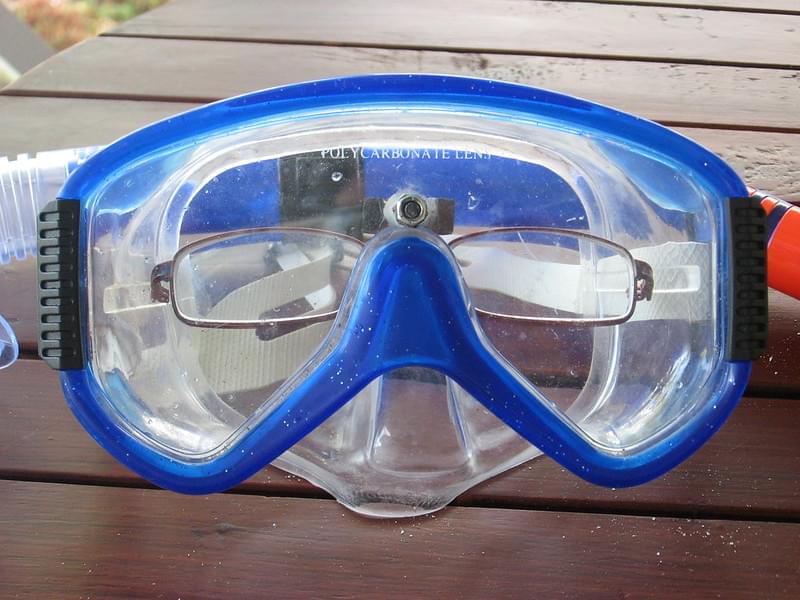
Snorkeling with glasses—why it doesn’t work
Wearing eyeglasses under a snorkel mask doesn’t work well. Masks and goggles aren’t designed to accommodate glasses, and full-face masks still don’t have enough space. On land it may seem okay, but once in the water, the earpieces break the mask’s seal and cause leaks. Glasses are also meant to sit a specific distance from your eyes; pressing them closer or further away can distort your vision even more.
Snorkeling with glasses is impractical and can ruin a fun outing. Instead of wearing glasses in the water, consider one of these alternatives: use the ocean’s natural magnification, wear contact lenses, invest in a prescription snorkel mask or pop-in lenses, try stick-on magnifier lenses or create a budget-friendly DIY mask.
Alternatives to snorkeling with glasses
Natural magnification
When you wear a flat snorkeling or diving mask, water magnifies objects about 25 percent and makes them appear 33 percent closer2. If your prescription is mild (between +1.00 and –1.00), you might find this natural magnification sufficient to enjoy coral reefs and marine life without corrective lenses.
Contact lenses
Contact lenses are a budget-friendly, widely available solution:
-
Affordable and easy to find
-
Comfortable once you get used to them
-
Work with any standard snorkeling mask
-
Disposable lenses are great for travel
Pros
-
Avoid hard or gas-permeable lenses—pressure changes can make them uncomfortable
-
Soft lenses can be lost if water leaks into your mask
-
Must rinse and disinfect eyes after snorkeling to prevent infection
-
Not ideal for people prone to eye infections
Cons
Soft disposable lenses are ideal because you can bring backups and discard them after each snorkel session. Always close your eyes if water leaks into your mask and rinse your eyes with clean water afterward. If you’re new to contacts, try them well before your trip and consult your eye doctor first.
Prescription snorkel masks
For snorkelers with moderate to severe vision issues, prescription snorkel masks offer clear underwater vision:
-
Lenses matched to your prescription for nearsightedness, farsightedness or astigmatism
-
No need to wear contacts
-
Allows a wide field of view
Pros
-
More expensive than other options
-
Ready-made masks have limited powers and may not suit uneven prescriptions
-
Custom masks take time to order and fit
Cons
Ready-made masks typically cover –1.0 to –10.0 for nearsighted and +1.0 to +4.0 for farsighted. For astigmatism or different prescriptions in each eye, you’ll need a custom mask from a dive shop or specialized optician. They’re pricier but ideal if you snorkel and dive frequently. Visit your optometrist before ordering.
Pop-in prescription lenses
Many major dive gear brands sell masks with removable lenses. When your prescription changes, replace just the lenses instead of the entire mask:
-
Cheaper than a fully custom mask
-
Easy to swap lenses as your prescription changes
-
Widely available for many mask models
Pros
-
Only certain prescriptions and increments are offered
-
You still need a mask model that accepts pop-in lenses
-
Not suitable for strong or unusual prescriptions
Cons
Stick-on magnifier lenses
Farsighted snorkelers and underwater photographers often use stick-on magnifiers. These flexible lenses attach to the inside of your mask to create a near-vision zone—great for reading gauges or camera settings. They’re inexpensive and removable.
DIY snorkel mask
If you’re snorkeling only occasionally and want a budget option, you can create a DIY prescription mask by gluing lenses from an old pair of glasses into your mask. It’s not ideal for long-term use, but it works in a pinch:
-
Inexpensive if you have spare glasses
-
Allows you to use your current prescription
Pros
-
Frame or lenses can interfere with the mask seal
-
Glue may degrade over time
-
Not a long-term solution
Cons
To make a DIY mask:
- Remove the earpieces from an old pair of glasses.
- Fit the frames or lenses inside the mask, ensuring they don’t push on your nose or break the seal.
- Once you find the right position, glue the lenses carefully to the inside of the mask with waterproof adhesive safe for tempered glass or plastic.
Frequently asked questions
Frequently asked questions
Can I wear my glasses under a snorkel mask?
No. Glasses will break the seal of your mask and push the lenses into the wrong position, causing leaks and blurry vision. A snorkel mask simply isn’t designed for glasses.
Are contact lenses safe for snorkeling?
Yes—if you use soft disposable lenses and take precautions. Avoid hard or gas-permeable lenses, close your eyes if water leaks in and rinse and disinfect your eyes afterward. Consult your eye doctor before your trip.
Should I invest in a prescription snorkel mask?
A prescription mask is the clearest option for frequent snorkelers or those with stronger prescriptions. Ready-made masks work for moderate prescriptions
What if my prescription keeps changing?
for complex prescriptions, a custom mask from a dive shop is worth the investment.
How do I avoid losing my contacts while snorkeling?
Choose pop-in lenses if you expect your prescription to change. These allow you to replace just the lenses instead of buying a new mask. For mild, stable prescriptions, a ready-made prescription mask is fine.
Conclusion
Snorkeling with glasses isn’t practical, but there are many effective alternatives. Mild vision issues often require no extra gear thanks to water’s natural magnification. Contact lenses work well for most people, while prescription masks or pop-in lenses are best for stronger prescriptions. Choose the option that suits your vision and budget, and you won’t miss a single parrotfish or coral head on your next snorkeling adventure.
References
-
Kian, Meena. “A Change in Worldview: Vision Correction Explained.” Saltman Quarterly, UC San Diego, 1 June 2020, sqonline.ucsd.edu. ↩
-
Adolfson, John, and T. Berghage. Perception and Performance Under Water. John Wiley & Sons, 1974. psycnet.apa.org. ↩
Last updated 30 August 2025
